#Surveyors Sydney
Text
10 Tips For An Effective Property Boundary Survey
A property boundary survey conducted by surveyors Sydney is an invaluable tool for landowners and developers. This comprehensive assessment is instrumental in accurately defining the physical boundaries of a piece of land, ensuring clarity, and avoiding legal tangles. Whether you’re investing in new land, or building, or just seeking to understand the parameters of your property, a well-executed boundary survey is critical.
Here are some useful tips to ensure an effective property boundary survey
Understand the Purpose
Comprehend the underlying reason for conducting a boundary survey. The motive could range from erecting a fence to construction or resolving a property line dispute. Knowing the objective helps in choosing the appropriate type of survey, be it a topographic, construction, or simple boundary survey.
Gather Existing Documents
Before initiating the survey, amass all relevant documentation. This includes titles, deeds, property descriptions, and previous survey records. These documents will provide a preliminary understanding of the property and guide the survey process.
Select Experienced Professionals
Engage a team that is adept and experienced in carrying out property boundary surveys. Ensure that the professionals have a robust understanding of local regulations and land laws. This insight is critical to the accuracy of the survey and in precluding potential disputes.
Clarify the Scope of Work
Set clear expectations and define the scope with the team. Discuss what needs to be marked or staked out, and make sure that all aspects such as easements, rights-of-way, and any known encroachments are taken into consideration.
Establish a Realistic Timeline
Surveying can be intricate and time-consuming. Propose a timeline that takes into account any potential delays – be it due to climatic conditions or unexpected hindrances. A well-thought-out timeline will facilitate better planning and coordination of associated tasks.
Communication is Key
Maintaining open channels of communication with the team conducting the survey is imperative. Be available to promptly address queries and provide necessary documents. Active involvement will contribute to a smoother and more efficient process.
Understand Local Regulations and Zoning Laws
While the professionals will be well-versed in local laws, it's advantageous to familiarize yourself with them too. Comprehending local zoning laws and regulations will render clarity on what you can achieve with your property.
Double-Check for Accuracy
Once the survey is complete, verify the results meticulously. Cross-check the markers, measurements, and other data against existing documents. If you notice discrepancies, seek clarification or a review of the concerned sections.
Secure the Survey Data
Post-survey, you will receive vital documents that may include maps, descriptions, and digital data. Store these records in a secure location and consider creating backups. This data is precious for any future developments or transactions related to the property.
Consult a Legal Expert if Necessary
The survey may occasionally uncover potential legal issues such as encroachments or boundary disputes. Consulting a legal expert in property laws to examine the survey data is prudent. They can provide guidance and insights on the best course of action.
Beyond these helpful tips, it is also a good idea to consider the cost implications of the boundary survey. Get a transparent estimate from the professionals. Be sure that the estimate covers all the aspects of the survey you need. Sometimes, it might be tempting to go with the least expensive option, but it is important to ensure that the team you choose has the requisite experience and expertise to perform the survey effectively.
An effective property boundary survey is a cornerstone for successful land development and management. From understanding the purpose of the survey, selecting skilled professionals, and ensuring open communication, to double-checking accuracy and securing data - each step is critical.
Moreover, being cognizant of the legal landscape, considering the costs, actively utilizing the data, and being a good community member can make the process seamless and constructive. Armed with these tips and considerations, you are well-prepared to embark on a successful property boundary survey that will serve as a solid foundation for your present and future endeavours.
0 notes
Text
Sydney Estimator is a team of experts in construction estimation and project management who serve Sydney and NSW. We provide cost effective Construction Estimating Services for the Building and Construction Industry.
0 notes
Photo

Contact the team of experts at Sydney Surveyors for the Residential Surveyor In Sydney. Residential Surveyors are trained in identifying and diagnosing defects and will refer clients to specialists. If you want more details, call - 02 9708 0177 and visit - https://www.sydneysurveyors.com.au/property-types/residential-surveyors-sydney/
0 notes
Photo

The Best Construction Quantity Surveyor Sydney
Quantity surveyors are responsible for managing all aspects of the contractual and financial side of construction projects. For construction quantity surveyor Sydney, you can trust Dunvei Construction Consultants. We also offer a freelance quantity surveying service for building contractors and developers to assist in periods of peak demand. Visit the link!
0 notes
Text
Wednesday 22nd February 2023
Drizzle! What a wake up call! Well we were travelling so that's okay. First up as soon as we had started the 176km journey was to pop into the Pit Stop café in Woodenbong for breakfast.
The girl there assured us that it would be possible to do proper sunny side up eggs with the English style bacon and toast. Assurances given we chose a nice table in the courtyard before it chucked it down again. Whilst we waited, a local called Tim felt we would benefit from his life history and family genealogy dating back to Viking times! As you can imagine, a timeline of this longevity can take a little while and we were well into the toast section before we could persuade him we didn't know anyone called Dennis in England and for peace to descend on our repast and for the second day running the Aboriginal waitresses forgot our coffee.
We have really unexpectedly enjoyed Woodenbong and were sad to leave it. But Woodenbong in the rain would not have been a great prospect so off we went in the Nissan through the stunning countryside set amongst the mountain range of the Tooloom National Park.. The first town on route was Legume. Well I'm sure it was but there was nothing there and we missed it. Soon after this somewhat anonymous encounter, we suddenly left NSW behind us and we found ourselves in Queensland, The Sunshine State. Not only lost NSW but also an hour, it was 12.10 again! The second town on our trip today was Killarney; a charming little place that we felt deserved a look. It was named by a land surveyor and homesteader John Sydney O'Brien in 1840 because it reminded him of Killarney in Southern Ireland, so he poured a pint of Irish in the lake and named it Killarney. To start with it had a little antique shop with a very chatty Aussie lady in it. Top marks so far then. The heritage centre was shut of course but it did have a box of tourist maps outside. We trailed around the township with one looking at the heritage buildings and were entirely satisfied with Killarney. Then the rain started again and we rejoined our route; next stop Warwick. No not that one. With no castle to look at we wondered what it would yield. Tourist information ladies were extremely helpful in providing a town map with its heritage route clearly highlighted for us. Basically, fundamentally, you just walk around the block to see the Town Hall, Masonic Centre, Church, Police Station and Law Courts, but even so it was very enjoyable and the map was also able to direct us to the station where there's an embryo of a heritage railway, the Southern Downs Steam Railway. We were shown around the fascinating little museum and engine shed by an extremely enthusiastic volunteer who explained the hopes and plans for this enterprise. Interest in heritage railway is steadily growing in Australia and I'm sure it will have a great future. It's just about 30years behind the UK in capability.
With one more stop for a brew, we headed on to our new digs for the next couple of nights in Cranley, a rural suburb of Toowoomba, which is probably roughly 130km due west and inland from Brisbane. It's a lovely spacious apartment, probably the largest we've had, in the grounds of our landlords house and shared by two goats, chickens and a duck. I think we shall be happy here. We can now say that combining both this and our last trip in 2019, we have now travelled all the way from Victoria across NSW and into Queensland.
Other parts of Australia are suffering at the moment. Southern Australia is experiencing a heat wave, north of Melbourne there's a large bush fire, Sydney had flash flooding yesterday and NZ North Island is really struggling with the after effects of Cyclone Gabrielle leaving billions of dollars worth of damage especially in the Hastings and Napier region of Hawkes Bay.
ps. It might be The Sunshine State, but Thursday morning finds us in cloud and 19 degrees. Weather promises to improve.
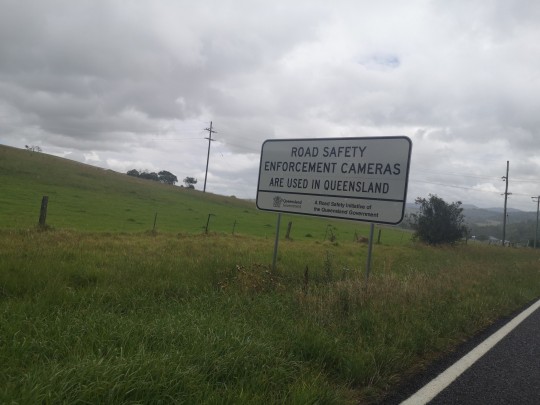
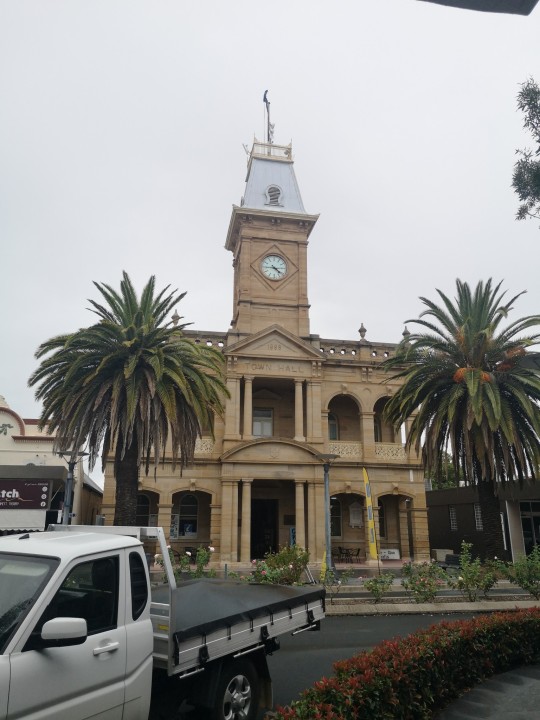
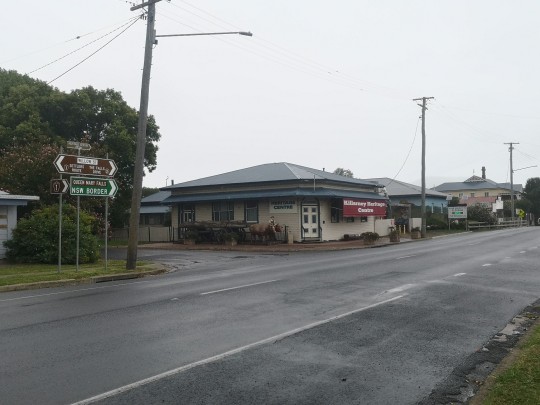
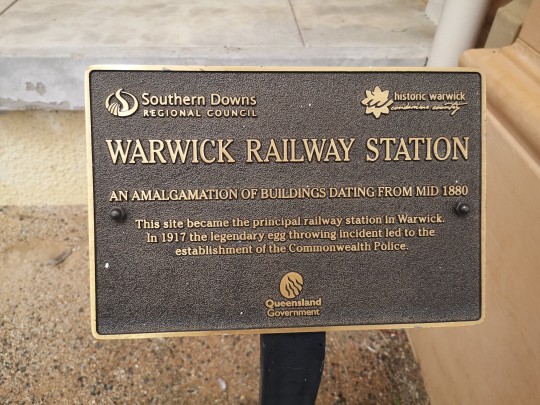
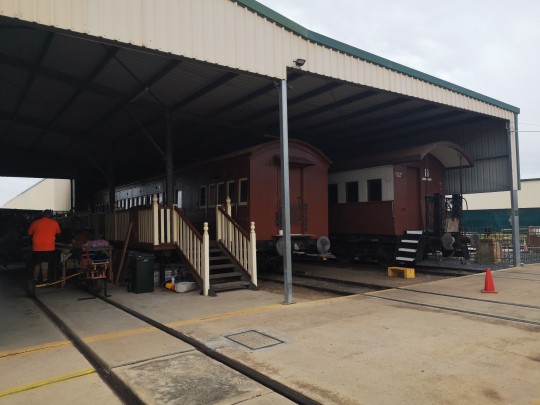
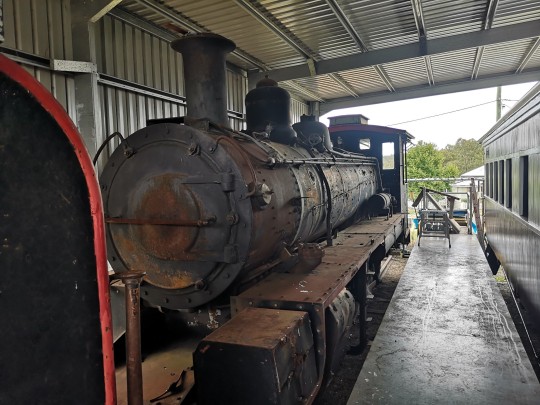
2 notes
·
View notes
Photo

“The second purpose of transportation to carceral islands was to discipline convicts who misbehaved or reoffended, through the dual mechanism of distance and labour. In 1817, John Thomas Bigge, former deputy-judge advocate of Trinidad, was commissioned by the British parliament to report on the convict system in Van Diemen’s Land and New South Wales. The two key aspects of Bigge’s convict reforms were to disperse convicts across the countryside under assignment to pastoralists in order to rapidly increase the area of land under cultivation, and to introduce a multi-level system of punishment which isolated convicts undergoing secondary punishment, as well as subjecting them to hard labour. Convicts found guilty of misconduct worked either in road or chain gangs or, for more serious offences, were sent to isolated penal settlements.
Bigge’s scheme was designed to rapidly expand agricultural and pastoral industries, situated in the coastal and interior regions of New South Wales respectively. In order to fulfill the Colonial Office’s instructions to “separate the convict population from the free population”, Bigge “was naturally led to inquire whether any of the islands in Bass Straits, or upon the eastern coast of New South Wales, were calculated for the reception of convicts”. However, upon receiving information from surveyors and locals, Bigge complained that Norfolk Island had proved too difficult to access by boat and “no other island […] had the same advantages of soil or climate” to sustain a convict population.
Ultimately, Bigge recommended several sites on the coast of New South Wales as possible locations for secondary punishment stations. However, when the Governor of New South Wales, Thomas Brisbane, and the Secretary of State for the Colonies, Lord Bathurst, came to establish a new penal settlement in 1824, they rejected Bigge’s suggestions and opted instead to settle Norfolk Island in the Pacific. Bathurst believed that, rather than having the “worst description of convicts […] placed in the midst of a thriving and prosperous colony”, Norfolk Island should be occupied “upon the principle of a great Hulk or Penitentiary”.
The penal system that Bigge created relied on distance as the primary mechanism of secondary punishment within the Australian colonies, which translated into officials selecting remote islands. For Norfolk Island to act as an effective deterrent to crime for the convict population, it had to be feared, and a distant island was a powerful image in the minds of the general public. As the Lieutenant-Governor of Van Diemen’s Land, George Arthur, wrote, “being sent to Norfolk Island […] should be considered a place of ultimate limit, and a punishment short of death”. The fact that Norfolk Island was so distant fed into rumours and myths about the “depravity” of the convicts who were sent there. Far from being the “worst” convicts, the majority of Norfolk Island’s inmates had been convicted of minor property crimes and a third were serving their original sentence of transportation. The imaginary of Norfolk Island was so strong in the public mind that insularity became synonymous with isolation in the Australian context, as subsequent prison islands were all understood in relation to their Pacific counterpart.
The other colony that overhauled its convict system along the lines of Bigge’s report was Van Diemen’s Land. Officials here were equally drawn to islands as sites of secondary punishment. At the centre of Macquarie Harbour, a body of water twice as big as Sydney Harbour, was an archipelago of carceral islands. The main settlement, with shipyard, was the vast Sarah Island (also known as Settlement Island), which stretched from the pilot station to the shores of Macquarie Harbour. Next door was the “detached fort” of Grummet Island (or Small Island), which housed a hospital and penitentiary. In 1826, Lieutenant-Governor George Arthur wrote to the Colonial Office recommending its closure because of the encroachment of free settlers and the high rates of escape.
Between 1821 and 1832, there were 150 escape attempts involving 271 individuals, or nearly one in four of those who had been convicted of a second crime after being transported to the colony. Lieutenant-Governor George Arthur’s language mimicked Bigge’s when he stressed that “as the Colony becomes more and more populated, the barrier between these wretched Criminals and the rest of the Community will be decreased, and escape will constantly become more easy”. Even if convicts were kept on islands overnight, they worked on the mainland, which presented an opportunity for escape. On similar grounds, Arthur criticised the penal settlement on Maria Island, which had been for the punishment of less “serious” secondary offenders a year earlier, in 1825. Situated just four kilometres east of the Tasmanian mainland, Arthur complained that “it is much too near the settled districts on the Main Land to be regarded as a safe depot for very desperate offenders”.
For this reason, Arthur suggested King Island, to the west of the Bass Strait, as a suitable alternative, from which escape would be almost impossible. However, Arthur noted that its warm climate and natural beauty made it more akin to a paradise, than a penitentiary, rendering it in some respects undesirable as a place of punishment. In 1827, Arthur once again put forward a new island penal settlement on Phillip Island – situated off the southern coast of Australian, near modern-day Melbourne. However, Phillip Island was far from a utopia: its dry soil and swampy interior made it economically unviable for convicts to cultivate the land, though Arthur believed it could still be a “viable temporary penal establishment”. In the same year, Arthur formed an executive committee on the problem of educated convicts, suggesting that they should be segregated from the corrupting influence of the general convict population. Arthur seemed certain that “an island may be found much more convenient and available than any district” to keep educated convicts separate from the rabble.
Similarly, the Colonial Treasurer, Jocelyn Thomas, claimed that “the various islands in the Bass Strait (King, Furneaux, Cape Barren etc. etc.) all afford eligible situations for Penal Settlements”. Many of these islands were later used for the confinement of Indigenous Australians. This demonstrates the enduring appeal of islands as “natural prisons”, though officials used different arguments to explain why a certain population was best suited for confinement there. Islands offered the possibility to protect society from “dangerous” convicts, but the isolation could also protect “gentlemen” convicts from corruption from a society made up of “ex-cons.”
In the mid-1830s, policymakers turned away from remote islands to urban islands located in the midst of city harbours as sites that balanced surveillance, security, and labour needs. In the preceding decade, the extraction of convict labour in penal settlements had become increasingly more important than punishment through “internal relocation to the peripheries of New South Wales”. From the mid-1830s, islands in Sydney Harbour – including Goat Island, Cockatoo Island, and Pinchgut Island – were used as sites of secondary punishment through hard labour. From 1833 to 1839, convicts on Goat Island quarried a gunpowder magazine, soldiers’ barracks, and a wharf to fortify the harbour. Between 1840 and 1841, convicts levelled the top of the island to build a military fortification on the colony’s first prison, Pinchgut Island (now Fort Denison). On the largest island in the harbour, Cockatoo, convicts spent over a decade from 1847 quarrying a dry dock directly into the sandstone base of the island, and then built and manned the workshops to repair and outfit ships until 1869.
Convicts were sometimes sent to the islands under sentence by magistrates (with powers awarded under the 1830 Offenders’ Punishment and Transportation Act), but more often they were simply transferred from a road gang to an island gang. The Principal Superintendent of Convicts would send convicts deemed dangerous or likely to escape to these islands, which were perceived as sites of increased security despite their proximity to Sydney. In December 1840, for example, a convict found guilty of sexual assault of an Indigenous woman, two convicts suspected of bushranging, and nine convicts who had been re-transported from South Australia were sent to Goat Island (the latter awaiting transfer to Norfolk Island). When John Carroll committed burglary the convicting magistrate recommended that he be punished “at a distance from Sydney, in consequence of […] [his] desperate character”. With this in mind, Governor George Gipps instructed that he be “sent either to Cockatoo or Pinchgut Island”, rather than mainland stockades that were several hundred kilometres distant from the capital. Clearly, officials viewed the islands of Sydney Harbour as both extra-punitive sites and locales for extra-mural convict labour.
In 1837, the British parliament commissioned a Select Committee on Transportation, which was chaired by Sir Henry Molesworth and comprised anti-slavery abolitionists and evangelicals. Based on testimony by a carefully selected set of anti-transportation witnesses, the committee concluded that the Australian convict system was characterized by excessive violence (flogging and chaining) and many forms of vice (including rape, sodomy, and child molestation). When it became clear that convict transportation to New South Wales would likely cease, the former Secretary of State Viscount Howick issued a memorandum with a list of possible destinations for British and Irish convicts – all of them islands. He rejected the Ionian Islands off the coast of Greece, St. Helena in the Atlantic, and the Falkland Islands off the coast of Argentina before settling on Norfolk Island as the best site. This indicates there was a wider British imperial consensus about islands’ suitability as penal colonies, and islands were also favoured as penal colonies in other empires.
...
It was incumbent upon Gipps to find a new penal settlement for secondarily transported convicts who needed to be removed from Norfolk Island. However, since convict transportation to New South Wales had ceased, Gipps could no longer transport convicts to penal settlements within the colony, leading him to pass legislation to remove convicts from penal settlements to any “site of hard labour”. Thus, relocation to islands continued, under a different legal sentence, as a regional practice after transportation between the metropole and colony had ceased. In February 1840, Gipps proposed that either Tasman’s Peninsula or King Island in the Bass Strait replace Norfolk Island as “a new penal colony”. However, Governor John Franklin refused to accept secondarily transported convicts within the limits of Van Diemen’s Land. Franklin, for his part, proposed Auckland Island, off the coast of New Zealand.
In 1841, Lord Russell suggested Goat Island in Sydney Harbour, but Governor Gipps adapted his instructions to send convicts to another harbour island, Cockatoo Island, because it was not safe to send convicts to a “place already occupied by a magazine of gunpowder”. Despite being separated from Sydney’s shore by just a few kilometres, Gipps insisted it was “the place of greatest security within the colony, not actually a prison”. Indeed, Gipps asserted that proximity was preferable to isolation when it came to secondary punishment, claiming that “stations for doubly convicted men, seem to me to have been erroneously placed at great distances from the seat of Government […] [so they] have rarely, if ever, been visited by the Governor of the Colony, or by any person high in authority”. Cockatoo Island, in the midst of Sydney Harbour, was both secure and easy to survey; or, as Gipps put it, Cockatoo Island was “surrounded […] by deep water, and yet under the very eye of authority.”
Over the next five years, secondarily transported convicts were transferred from Norfolk Island to Cockatoo Island under a scheme that more than halved the terms of their remaining sentences. They were joined by the Superintendent of Agriculture, Charles Ormsby, who became Superintendent of Cockatoo Island from 1841. The movement of both the Superintendent and a large body of convicts from one to the other led convict James Laurence to remark that Cockatoo Island was the same as Norfolk Island in every respect, except for the fact that Cockatoo was a “small island”. This marks a decisive shift away from isolation as punishment, which was replaced with hard labour for the public benefit, but with the added value of the security offered by water and walls to keep the felons in. Despite Cockatoo Island’s proximity to Sydney, Godfrey Charles Munday described it as a “natural hulk”, using the same descriptor as Lord Bathurst had for Norfolk Island.
Long after the majority of secondarily transported convicts had left, and Cockatoo Island effectively operated as a local gaol, it retained its associations with the convict system through its Pacific predecessor. In an 1857 inquiry, Cockatoo Island was dubbed a “worse hell-on-earth even than Norfolk Island”, and Henry Parkes claimed that the superintendent “Mr. Ormsby is so isolated, as much indeed as if he were a thousand miles off in the Pacific”. Despite their clearly opposite geographies in relation to the mainland – the former just one-and-a half kilometres and the other 1,500 kilometres away from Sydney – they were considered comparable due to their insularity. Though from the mid-1830s a clear shift had taken place in favour of proximate urban islands, in the public mind islands were by definition “isolated” – an idea dating back to Robinson Crusoe’s “desert island” (1719), which was further entrenched in the Australian colonies through Norfolk Island’s mythology. This led officials to believe that Australian islands were a better deterrent and were more suitable for the “worst” offenders.”
- Katherine Roscoe, “A Natural Hulk: Australia’s Carceral Islands in the Colonial Period, 1788–1901.” International Review of Social History 63 (2018), p. 53-59.
Image is: A pair of convicts, known as canary birds because of their colourful though degrading 'punishment' clothes, at work writing letters on Cockatoo Island, Sydney, drawn by Phillipe de Vigors, 1849. State Library of New South Wales SSV/39.
#cockatoo island#sydney#penal colony#convict transportation#carceral islands#carceral geography#prison hulk#island prisons#norfolk island#convict labour#convict settlement#settler colonialism#settler colonialism in australia#australia in the british empire#academic quote#academic research
2 notes
·
View notes
Text
The Future of Surveying: Trends Shaping the Industry

Surveying, once a traditional field reliant on manual tools and techniques, is undergoing a profound transformation. Advancements in technology, shifting industry demands, and environmental challenges are reshaping the landscape of surveyors Sydney. As we peer into the future, several key trends are emerging, promising to redefine how we perceive, conduct, and utilise surveying in various sectors.
0 notes
Text
The Best Land Surveying Services in Sydney
We record our findings in detail to create maps or plans. Our Sydney-based surveyor team specialises in obtaining accurate measurements to establish property boundaries, update boundary lines, and prepare the land for construction. The process involves employing a range of equipment tailored to the specific surveying needs, such as a total station, digital level, GPS rover, mobile laser scanning unit, or an aerial vehicle, commonly referred to as a drone.
Visit Us: https://cehconsulting.com.au/location/land-surveyor-in-sydney/
0 notes
Text


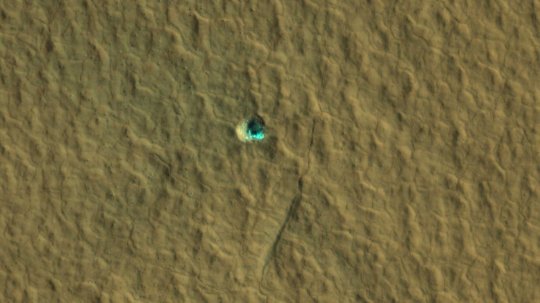

NASA Is Locating Ice on Mars With This New Map
The map could help the agency decide where the first astronauts to the Red Planet should land. The more available water, the less missions will need to bring.
Buried ice will be a vital resource for the first people to set foot on Mars, serving as drinking water and a key ingredient for rocket fuel. But it would also be a major scientific target: Astronauts or robots could one day drill ice cores much as scientists do on Earth, uncovering the climate history of Mars and exploring potential habitats (past or present) for microbial life.
The need to look for subsurface ice arises because liquid water isn’t stable on the Martian surface: The atmosphere is so thin that water immediately vaporizes. There’s plenty of ice at the Martian poles – mostly made of water, although carbon dioxide, or dry ice, can be found as well – but those regions are too cold for astronauts (or robots) to survive for long.
That’s where the NASA-funded Subsurface Water Ice Mapping project comes in. SWIM, as it’s known, recently released its fourth set of maps – the most detailed since the project began in 2017.
Led by the Planetary Science Institute in Tucson, Arizona, and managed by NASA’s Jet Propulsion Laboratory in Southern California, SWIM pulls together data from several NASA missions, including the Mars Reconnaissance Orbiter (MRO), 2001 Mars Odyssey, and the now-inactive Mars Global Surveyor. Using a mix of data sets, scientists have identified the likeliest places to find Martian ice that could be accessed from the surface by future missions.
Instruments on these spacecraft have detected what look like masses of subsurface frozen water along Mars’ mid-latitudes. The northern mid-latitudes are especially attractive because they have a thicker atmosphere than most other regions on the planet, making it easier to slow a descending spacecraft. The ideal astronaut landing sites would be a sweet spot at the southernmost edge of this region – far enough north for ice to be present but close enough to the equator to ensure the warmest possible temperatures for astronauts in an icy region.
“If you send humans to Mars, you want to get them as close to the equator as you can,” said Sydney Do, JPL’s SWIM project manager. “The less energy you have to expend on keeping astronauts and their supporting equipment warm, the more you have for other things they’ll need.”
Previous iterations of the map relied on lower-resolution imagers, radar, thermal mappers, and spectrometers, all of which can hint at buried ice but can’t outright confirm its presence or quantity. For this latest SWIM map, scientists relied on two higher-resolution cameras aboard MRO. Context Camera data was used to further refine the northern hemisphere maps and, for the first time, HiRISE (High-Resolution Imaging Science Experiment) data was incorporated to provide the most detailed perspective of the ice’s boundary line as close to the equator as possible.
Scientists routinely use HiRISE to study fresh impact craters caused by meteoroids that may have excavated chunks of ice. Most of these craters are no more than 33 feet (10 meters) in diameter, although in 2022 HiRISE captured a 492-foot-wide (150-meter-wide) impact crater that revealed a motherlode of ice that had been hiding beneath the surface.
“These ice-revealing impacts provide a valuable form of ground truth in that they show us locations where the presence of ground ice is unequivocal,” said Gareth Morgan, SWIM’s co-lead at the Planetary Science Institute. “We can then use these locations to test that our mapping methods are sound.”
In addition to ice-exposing impacts, the new map includes sightings by HiRISE of so-called “polygon terrain,” where the seasonal expansion and contraction of subsurface ice causes the ground to form polygonal cracks. Seeing these polygons extending around fresh, ice-filled impact craters is yet another indication that there’s more ice hidden beneath the surface at these locations.
There are other mysteries that scientists can use the map to study, as well.
“The amount of water ice found in locations across the Martian mid-latitudes isn’t uniform; some regions seem to have more than others, and no one really knows why,” said Nathaniel Putzig, SWIM’s other co-lead at the Planetary Science Institute. “The newest SWIM map could lead to new hypotheses for why these variations happen.” He added that it could also help scientists tweak models of how the ancient Martian climate evolved over time, leaving larger amounts of ice deposited in some regions and lesser amounts in others.
SWIM’s scientists hope the project will serve as a foundation for a proposed Mars Ice Mapper mission – an orbiter that would be equipped with a powerful radar custom-designed to search for near-surface ice beyond where HiRISE has confirmed its presence.
TOP IMAGE....The blue areas on this map of Mars are regions where NASA missions have detected subsurface water ice (from the equator to 60 degrees north latitude). Scientists can use the map – part of the Subsurface Water Ice Mapping project – to decide where the ... Credit: NASA/JPL-Caltech/Planetary Science Institute
CENTRE IMAGE....These Mars global maps show the likely distribution of water ice buried within the upper 3 feet (1 meter) of the planet’s surface and represent the latest data from the SWIM project. Buried ice will be a vital resource for astronauts on Mars, serving ... Credit: NASA/JPL-Caltech/PSI
LOWER IMAGE....The ice-exposing impact crater at the center of this image is an example of what scientists look for when mapping places where future astronauts should land on Mars. It’s one of several such impacts incorporated into the latest version of a series of NASA-funded maps of subsurface water ice on the Red Planet. Credit: NASA/JPL-Caltech/University of Arizona
BOTTOM IMAGE....In this artist’s concept, NASA astronauts drill into the Martian subsurface. The agency has created new maps that show where ice is most likely to be easily accessible to future astronauts. Credit: NASA
1 note
·
View note
Link
Water will be one of the most important resources for human explorers on Mars. They’ll need it for drinking, propellant, breathing, and more. It makes sense to land near a spot where there’s water ice close to the surface. NASA has released a new map of Mars’s northern hemisphere showing all the places where subsurface water ice has been detected, some of which are surprisingly close to the equator, as well as surprisingly close to the surface. This map could decide the first human landing site. Earlier and later HiRISE images of a fresh meteorite crater 12 meters, or 40 feet, across located within Arcadia Planitia on Mars show how water ice excavated at the crater faded with time. The images, each 35 meters, or 115 feet across, were taken in November 2008 and January 2009. Credit: NASA/JPL-Caltech/University of Arizona Early on during the Mars Reconnaissance Orbiter (MRO) mission, which arrived at Mars in 2006, scientists started finding evidence of subsurface water ice being exposed from recent impacts, showing up as bright white in the high-resolution images from the new spacecraft. While scientists were fairly certain there was ice below the surface at high latitudes of Mars, they were surprised to find that the ice was also present closer to the equator. But whenever you’re looking for exposed subsurface ice on the Red Planet, you have to look fast. It doesn’t take long for ice — or water – to sublimate away because of the thin atmosphere on Mars. Scientists have now combined data from several NASA missions, including MRO, 2001 Mars Odyssey, and the now-inactive Mars Global Surveyor. The project is called SWIM, Subsurface Water Ice Mapping. The project has just released its fourth set of maps, and NASA and JPL say these are the most detailed water ice maps since the project began in 2017. See the interactive map here, where you can zoom in and explore the various regions where water ice could be buried. Using a mix of data sets, scientists have identified the likeliest places to find Martian ice that could be accessed from the surface by future missions. “These ice-revealing impacts provide a valuable form of ground truth in that they show us locations where the presence of ground ice is unequivocal,” said Gareth Morgan, SWIM’s co-lead at the Planetary Science Institute, in a JPL press release. “We can then use these locations to test that our mapping methods are sound.” These Mars global maps show the likely distribution of water ice buried within the upper 3 feet (1 meter) of the planet’s surface and represent the latest data from the SWIM project. Buried ice will be a vital resource for astronauts on Mars, serving … Credit: NASA/JPL-Caltech/PSI The new maps reveal what scientists believe are masses of subsurface frozen water along Mars’ mid-latitudes. The northern mid-latitudes are especially attractive because a thicker atmosphere exists there than most other regions on the planet. A thicker atmosphere would aid in slowing down an incoming spacecraft. NASA says the ideal astronaut landing sites would be a sweet spot at the southernmost edge of this region – far enough north for ice to be present but close enough to the equator to ensure the warmest possible temperatures for astronauts in an icy region. “If you send humans to Mars, you want to get them as close to the equator as you can,” said Sydney Do, JPL’s SWIM project manager. “The less energy you have to expend on keeping astronauts and their supporting equipment warm, the more you have for other things they’ll need.” The HiRISE camera on NASA’s Mars Reconnaissance Orbiter took this image of a new, 8-meter (26-foot)-diameter meteorite impact crater in the topographically flat, dark plains within Vastitas Borealis, Mars, on November 1, 2008. The crater was made sometime after Jan. 26, 2008. Bright water ice was excavated by, and now surrounds, the crater. This entire image is 50 meters (164 feet) across. Credit: NASA/JPL-Caltech/University of Arizona Back in 2009, data from several instruments on MRO detected and confirmed highly pure, bright ice exposed in new craters, ranging from 1.5 feet to 8 feet deep, at five different Martian sites. Scientists said they were able to figure out, given how long it took that ice to fade from view, that the ice was about 99 percent pure ice. Over the years, MRO’s wonderful, high-resolution camera, HiRISE (High-Resolution Imaging Science Experiment) has continued to study fresh impact craters, where meteoroids may have excavated chunks of ice. For the latest maps for the SWIM project, HiRISE data was incorporated to provide the most detailed perspective of the ice’s boundary line as close to the equator as possible. Another instrument on MRO, the Context Camera, which provides a big-picture, background view of the terrain, provides data that further refines the northern hemisphere maps. Detailed image of large-scale crater floor polygons, caused by desiccation process, with smaller polygons caused by thermal contraction inside. The central polygon is 160 metres in diameter, smaller ones range 10 to 15 metres in width and the cracks are 5-10 metres across. Credit: NASA/JPL In addition to ice-exposing impacts, scientists also look for “polygon terrain,” where the seasonal expansion and contraction of subsurface ice causes the ground to form polygonal cracks. Seeing these polygons extending around fresh, ice-filled impact craters is yet another indication there’s more ice hidden beneath the surface at these locations. “The amount of water ice found in locations across the Martian mid-latitudes isn’t uniform; some regions seem to have more than others, and no one really knows why,” said Nathaniel Putzig, SWIM’s other co-lead at the Planetary Science Institute. “The newest SWIM map could lead to new hypotheses for why these variations happen.” He added that it could also help scientists tweak models of how the ancient Martian climate evolved over time, leaving larger amounts of ice deposited in some regions and lesser amounts in others. SWIM’s scientists hope the project will serve as a foundation for a proposed future mission, called Mars Ice Mapper. This would be an orbiter with a powerful subsurface radar that could search for near-surface ice beyond where HiRISE has confirmed its presence. The post A New Map Shows Where Mars is Hiding all its Ice appeared first on Universe Today.
0 notes
Text
12 Ways Land Surveyors Help Sustain The Environment
Our environment is a vibrant, interconnected web of life, the health of which is profoundly influenced by human activities. As our understanding of this intricate web deepens, we are better able to appreciate the significance of every profession that contributes to its sustainability. Among these, the work of land surveyors Sydney often goes unnoticed, despite its far-reaching implications for environmental sustainability.
Professionals who specialize in assessing and mapping the land are not merely technicians equipped with theodolites and GPS devices. They are custodians of our shared environmental heritage, and their expertise is a powerful tool for preserving and enhancing the natural world.
At the crossroads of science, technology, and nature, they possess a unique ability to influence our landscapes' future. This influence is often exerted in a series of gentle nudges - nudges that guide city planners, architects, farmers, conservationists, and policymakers alike in their quest to balance human needs with environmental imperatives.
How do land surveyors help preserve our environment? Read on and find out!
Designing Sustainable Developments
Careful planning is a fundamental part of minimizing the environmental impact of new constructions. Specialists in land assessment facilitate this process by offering valuable data on the features and constraints of a site. Their expertise aids in the design of developments that are in harmony with their surroundings, thus promoting sustainability.
Facilitating Efficient Use of Land
These experts help maximize land use efficiency. By providing precise measurements and detailed mappings, they allow for optimal space utilization, reducing the need for deforestation and thus preserving natural habitats.
Promoting Renewable Energy Projects
Detailed land assessments are critical to the success of renewable energy projects. For instance, in deciding the location for a wind farm, a thorough understanding of the land's topography is required. Through their contributions, these specialists indirectly help increase the generation and usage of renewable energy.
Guiding Erosion Control Efforts
Understanding the shape and slope of the land is vital in implementing effective erosion control measures. This knowledge, provided by land measurement experts, aids in the design of appropriate solutions such as terracing or the placement of erosion control mats, thus preventing soil degradation and loss.
Mapping Flood Zones
Accurate flood zone mapping is essential for mitigating the impact of flooding. Land assessment specialists provide detailed data on areas prone to flooding, allowing communities to prepare and implement measures to minimize damage.
Protecting Wetlands
Wetlands are critical ecosystems that provide habitats for a diverse range of species. By precisely identifying and mapping these areas, these professionals contribute to the protection and conservation of these vital environments.
Forest Conservation
As part of their work, they also identify areas of significant ecological value, like forests. This identification is crucial for implementing measures to preserve these spaces, thus aiding in forest conservation efforts.
Preventing Land Contamination
In cases of potential land contamination, such as the spill of hazardous materials, these specialists can accurately measure and map the affected area. Their work helps to contain and remediate the issue, preventing further environmental damage.
Assisting in Land Rehabilitation
They are also instrumental in land rehabilitation initiatives. After mining or other disruptive activities, their precise measurements guide the process of restoring the land to its natural state.
Wildlife Conservation
By mapping and demarcating wildlife habitats and migration corridors, these experts play a significant role in wildlife conservation. Their work helps ensure minimal disturbance to these areas from human activities.
Promoting Sustainable Agriculture
For agricultural land, their role involves determining the most effective and sustainable use of the area. This can involve identifying suitable locations for different crops or advising on the best practices to minimize soil erosion and depletion.
Advocacy for Environmental Regulations
The data collected and analyzed by these professionals often serves as an authoritative source of information in the creation of environmental laws and regulations. Their work provides the evidence needed to advocate for policies that protect the environment and promote sustainability.
Land measurement experts offer invaluable contributions to environmental sustainability. They guide sustainable development, optimize land use, support renewable energy projects, and much more. Their work is instrumental in preserving the delicate balance of our ecosystem and ensuring a more sustainable future for us all. As we move forward, their role in environmental preservation and advocacy will only continue to grow in importance.
0 notes
Text
Sydney Estimator is a team of experts in construction estimation and project management who serve Sydney and NSW. We provide cost effective Construction Estimating Services for the Building and Construction Industry.
#altus group#surveyor sydney#build a duplex cost#duplex sydney builders#bill of quanities#cost estimators
0 notes
Text
Navigating Your Way to the Best Boats for Sale in Sydney

Sydney, Australia, is renowned for its stunning coastline and vibrant maritime culture. If you've ever dreamed of owning a boat and exploring the picturesque waters surrounding this iconic city, you're in luck. Sydney offers a plethora of options when it comes to boats for sale, catering to various budgets and preferences. In this blog post, we'll be your guide to finding the perfect vessel to embark on your maritime adventures in Sydney.
Types of Boats Available
Sydney's boat market boasts a diverse range of vessels, each suited to different recreational activities. Whether you're into fishing, sailing, water sports, or simply cruising the harbor, you'll find boats to match your needs. Common types include:
Sailboats: Perfect for those who love the serenity of wind-powered travel.
Motorboats: Ideal for speed enthusiasts and those looking for convenience.
Fishing Boats: Equipped with specialized features for anglers.
Yachts: For those who dream of luxury and long-distance cruising.
Where to Start Your Search
When it comes to finding Boats for Sale Sydney, there are various avenues to explore:
Boat Dealerships: Sydney has numerous reputable dealerships that offer both new and used boats. They can provide valuable guidance and arrange sea trials.
Online Marketplaces: Websites like BoatSales.com.au, YachtWorld, and Gumtree are treasure troves of listings from both private sellers and dealers.
Boat Shows: Attending boat shows in Sydney is a great way to see a wide selection of boats in one place and talk to experts.
Consider Your Budget
Before you start your search, it's crucial to establish a budget. Boats come in various price ranges, and knowing your financial limits will help narrow down your options. Don't forget to account for maintenance, insurance, and mooring costs in your budget.
Inspect and Survey
Once you've found a boat that catches your eye, it's essential to inspect and survey it thoroughly. Engage a qualified marine surveyor to ensure the boat is in good condition and free from any hidden issues. This step is crucial, especially when buying a used boat.
Negotiation and Documentation
Negotiating the price is a common part of the boat-buying process. Be prepared to discuss the terms and conditions of the sale with the seller or dealer. Additionally, ensure all necessary documentation, including the transfer of ownership and registration, is completed correctly.
Maintenance and Storage
Owning a boat in Sydney means taking responsibility for its upkeep. Consider where you'll store your boat when not in use – many marinas and storage facilities are available. Regular maintenance and servicing are crucial to ensuring your boat stays seaworthy.
Safety and Regulations
Familiarize yourself with the local maritime regulations and safety guidelines in Sydney. This knowledge is essential for responsible boating and a safe experience on the water.
Join the Boating Community
Sydney has a thriving boating community. Consider joining local clubs or online forums to connect with fellow enthusiasts, share experiences, and stay updated on events and tips.
Conclusion
Sydney offers an unparalleled boating experience, and finding the right boat for sale is the first step to making your maritime dreams a reality. Whether you're looking for relaxation, adventure, or a bit of both, the boats for sale in Sydney cater to a wide range of preferences and budgets. So, get ready to embark on unforgettable journeys along Sydney's stunning coastline and immerse yourself in the city's rich maritime heritage. Happy boating!
0 notes
Text
Need a Construction Estimator in Sydney? Xpand Projects offers expert estimating services. Accurate cost assessments for your projects. Visit https://xpandprojects.com.au to streamline your construction planning and budgeting.
0 notes
Text

We work closely with the whole project team including the architect, engineer, quantity surveyor, and subcontractors to design the project with the end budget in mind. For #industrial builders Sydney, click: https://mainbrace.com.au/
0 notes
Text
dilapidation report sydney
Industrial Dilapidation Report.
Prepared by our team of experts at Dilapidation Report Sydney, our dilapidation reports act as a governing body between you, the owner of your property and any contractors who will be facilitating construction or renovation work. Holding power as a mitigation tool in court or in the event of claims, this report can cover your integrity and ensure that the responsible party takes ownership of any potential damages that arise due to their work
Plus, when you work with our team to acquire your industrial dilapidation report, you are guaranteed only the best of the best. With expert surveyors, architects and engineers on board, you can rest assured that we know our work inside and out.
What will my Dilapidation Report entail?
During a pre-constrction dilapidation report, our team will analyse all of your machinery and industrial facilities with a keen eye for detail. We will make note of any present faults or risks and note this to the contractors in a report. This report will all be documented with photographic evidence and will serve as authoritative proof in the event of future claims. Similarly, a post-construction dilapidation report will entail a detailed report of the status of your property. It will take place immediately after construction has finalised to locate any faults or damage.
Our Services
Industrial Dilapidation Report
Commercial Dilapidation Reporting
Residential Dilapidation Reporting
Lo siento, pero no tengo información específica sobre un informe llamado "DILAP Report Sydney". Mi conocimiento se detiene en septiembre de 2021 y no tengo acceso a información en tiempo real ni a documentos específicos que puedan haber sido creados después de esa fecha.
Si "DILAP Report Sydney" es un informe real o una referencia específica, te sugiero que busques en fuentes actualizadas o contactes a las autoridades o entidades relevantes en Sydney, Australia, para obtener más detalles sobre el informe en cuestión.
Si necesitas ayuda con cualquier otro tema o pregunta, no dudes en preguntarme. Estoy aquí para ayudarte en la medida de mis posibilidades.
Hasta donde llega mi conocimiento en septiembre de 2021, no tengo información específica sobre un informe llamado "DILAP Report". Es posible que sea un acrónimo o término específico utilizado en un contexto particular, pero sin más detalles, no puedo proporcionar información precisa al respecto.
Si tienes más información o contexto sobre qué se trata el "DILAP Report" o si es una referencia a algo específico, por favor, bríndame más detalles para que pueda intentar ayudarte de manera más efectiva.
Si es un informe reciente o relacionado con eventos posteriores a septiembre de 2021, te sugiero que busques fuentes actualizadas o te comuniques con las autoridades o entidades relevantes para obtener más información.
Visit for more information: https://www.dilapidationreportsydney.com.au/industrial-dilapidation-report/
0 notes